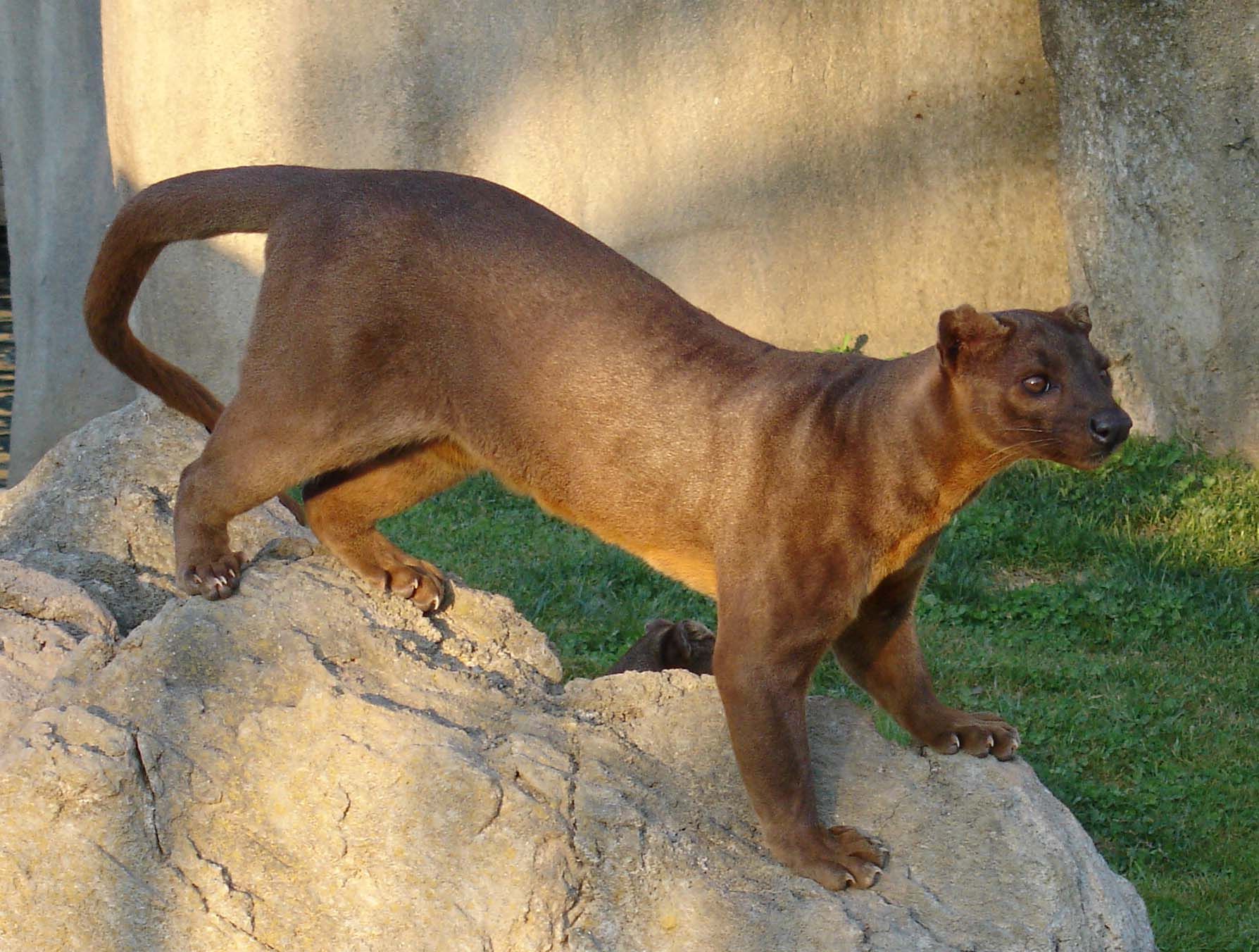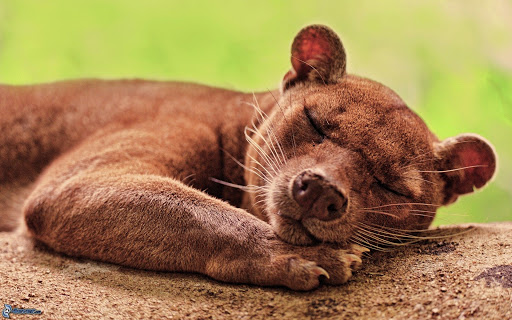The Fossa Animal is the strangest predator in Madagascar. You can't believe how an animal that seems so nice, is one of the dangerous predators on that island. We invite you to read this article so you can learn more about this endemic carnivore of that wonderful country.
The Fossa a unique predator
Every time the word fossa is mentioned in Madagascar, locals don't even want to hear it mentioned. Legends call him a devil who even kidnaps small children, although there is no real basis for such claims. The fossa animal is only a carnivorous predator, and it is the most relevant on that island.
It has a scientific name, which is Cryptoprocta ferox and it is a carnivorous mammal endemic to the island of Madagascar. If you observe it, it may be that we find it very similar to felines, but it has nothing to do with them, because it belongs to the euplerine family, all of which are native to the same region.
It is the predator par excellence of the island and this is because there are no other carnivorous mammals in Madagascar. For that reason, the fossa animal is also the main hunter of the lemurs, after humans.
The great size exhibited by the specimens of fossa animals today, since they have up to twice the volume of an average domestic cat, is the result of a phenomenon that in science is called insular gigantism. This phenomenon is an evolutionary adaptation of species that are isolated, as is the case of the fossa animal, and that do not have predators or natural competitors in their environment or habitat.
Physical characteristics of the animal Fossa
Male individuals are usually slightly larger than females, as they can measure about 80 centimeters in length, while females only reach 70 centimeters. The extension of its tail can reach almost a meter, while the weight for male specimens is approximately 10 kilos and while in females the weight reaches up to 7 kilos.
The fossa animal usually has very short fur, reddish, fawn or brown in color. Its head is small in proportion to the rest of its body, which is very elongated and muscular, a characteristic that makes it similar to a mongoose. Another differentiating element is that it has large round ears, with a dark nose and bulging brown eyes, an adaptation that enables them to see better during night periods. The fossa animal also has long whiskers all over its face.
One of the most striking physical peculiarities of the fossa animal is its external genitalia, because males have a penis that extends from the middle of their front legs. If we want to refer to the females, we can observe that they suffer a kind of transitory masculinization, until they are two years old, because they exhibit a very enlarged clitoris, which is usually confused with a pseudopenis.
The legs of the fossa animal are provided with retractable claws, very similar to those of felines, and their bare legs make it easier for them to grab hold of branches or rocks. Its way of walking is plantigrade and it has the ability to jump from tree to tree until it subdues its prey.
Behavior and reproduction of the Fossa animal
The fossa animal has essentially nocturnal habits. It prefers to hide in dry forests that have trees with spaces between them and a lot of bushy vegetation in their surroundings. It is capable of hunting lemurs by jumping on them, while birds can be caught on the wing. It is not unusual for the fossa animal to also feed on small mammals, insects, amphibians and reptiles.
It is not a herd animal. In contrast, the fossa animal is solitary and highly territorial. The way in which it marks its territory is through secretions produced by its scent glands. This behavior is common in both sexes, and it is the females who decide which suitor they are going to allow to approach to reproduce.
It has been observed that females are more dominant in this sense, because even when they are copulating, a female can withdraw from her lover. The number of offspring in each litter is variable. The young are born without teeth and naked, so they depend entirely on the mother until they are a year old. The young specimens are gray or white, they reach sexual maturity at three years of age and from then on they begin to reproduce.
Conservation status of the animal Fossa
Because of its way of acting and its physique, the fossa animal has been defined as an animal that is diabolical on the island of Madagascar. There are many legends that circulate around this mammal, in particular the most widespread that it comes out at night to kidnap babies.
Because of these legends, the local inhabitants of Madagascar do not think more than a second when they have the opportunity to hunt or kill one, although today it is a species that is protected by the laws of the local government. Hunting and the destruction of its natural habitat are the two main reasons why the population of the fossa animal has been reduced. It is thought that less than 2500 individuals remain in their natural habitat today.
However, the fame that the fossa animal has is undeserved, because it has nothing to do with its real way of behaving. These are indeed animals that are very docile, and some people have chosen them as pets. It has been proven that they can become very affectionate with their masters. In captivity, the life expectancy of a fossa animal is around 20 years.
If you liked this article, you will probably also enjoy reading:


